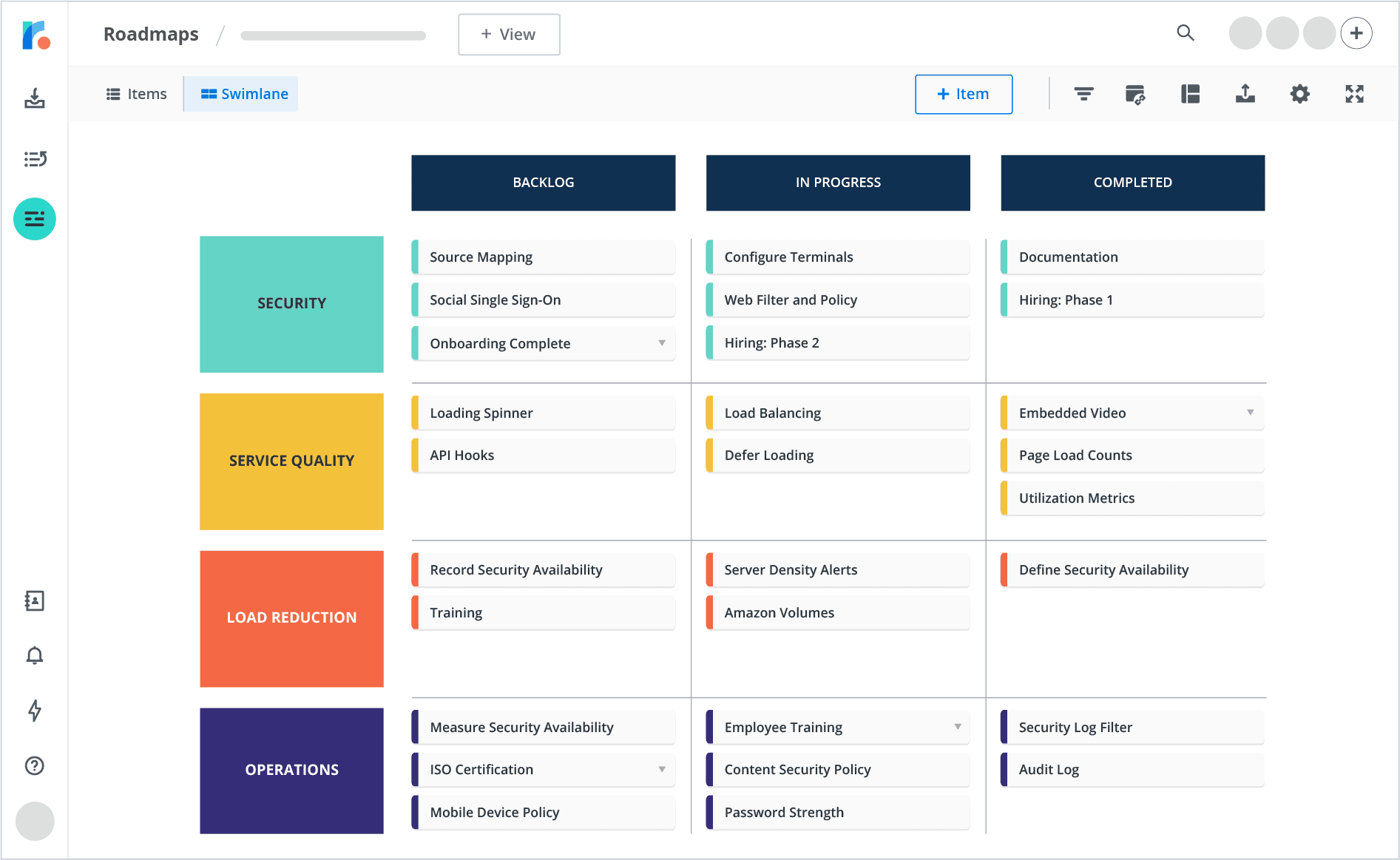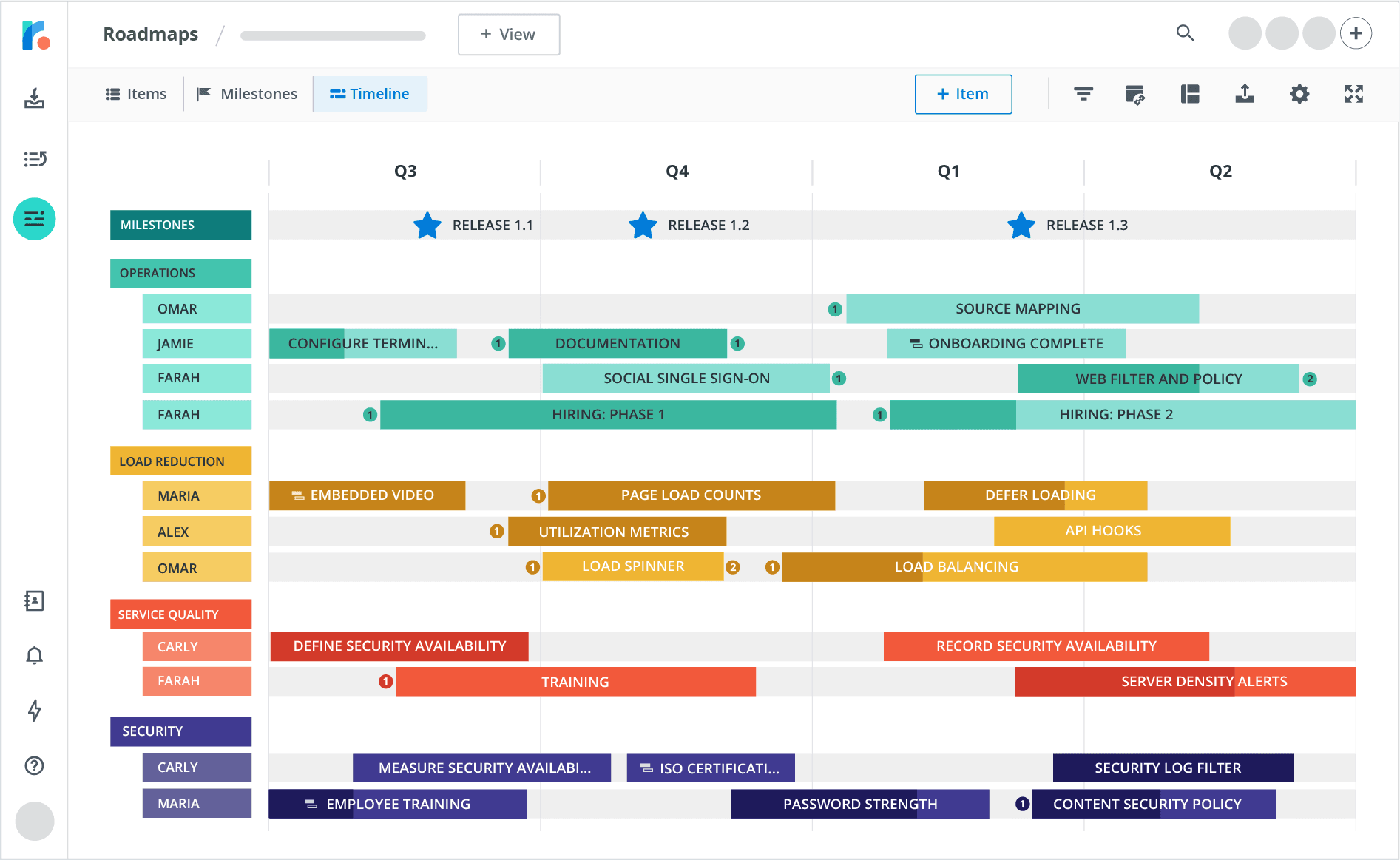
Technology roadmap: Plan your tech strategy and investments
Tempo Team
Attempting to deliver a project without the right software can feel like changing a flat tire without a wrench. It’s possible, but it requires a lot of improvisation, resulting in an inefficient, frustrating, and demoralizing process with worse outcomes. It’s not something anyone wishes to repeat.
If project managers aim to deliver high-quality outputs in the least amount of time, they need to supply team members with the right tools for the job. A technology roadmap helps them provide those tools.
If you’re new to roadmapping, here’s how to build a technology roadmap – plus tips to get the most out of the process.
What is a technology roadmap?
A technology roadmap audits an organization’s technological capabilities and lays out plans to develop its IT systems to better support business goals and objectives. It allocates resources to long- and short-term projects, ensuring each initiative has the tools and technology to succeed.
Here's an example of what a technology roadmap looks like:

Organizations can tailor the technology roadmap to suit specific business needs using one of the following frameworks:
Application roadmap
As a business evolves, it requires new tools to meet its strategic objectives. An application roadmap outlines app implementations that will sustain organizational growth. It highlights which teams leverage which tools and details the impacts of adoption on existing IT resources.
Roadmapping clarifies complex application infrastructure so businesses get the most out of their technological investments. It also identifies priorities and highlights which tools to implement next.
Internal IT systems roadmaps
An internal IT systems roadmap aligns an information technology team on the “when” and “why” of IT evolution by establishing and communicating departmental priorities. The document presents a high-level overview of various IT elements, such as:
Technology goals
Key initiatives
Timelines
Milestones
Resource allocation
Roles and responsibilities
IT systems roadmapping provides a framework for making informed decisions about technological investments. In addition, the roadmap coordinates deployment so technical capability meets departmental needs.
IT roadmap
An IT roadmap is similar to an internal IT systems roadmap, but this version focuses on the initiative’s value for the entire business rather than bridging IT gaps and addressing issues at the departmental level.
The IT roadmap combines IT and organizational strategies to further business goals. It answers crucial questions, like:
What initiatives will the IT department deploy during a specific timeline?
Which business goals do these initiatives support?
How does each IT initiative promote organizational growth and development?
IT roadmaps are typically owned by the company’s CTO, CIO, and IT managers. Roadmapping centralizes the planning and prioritization process, helping leaders build capacity and capabilities before they’re needed.
Development roadmap
A development roadmap communicates the Dev team’s long-term goals by highlighting technology initiatives, epics, and features within the engineering pipeline.
This roadmap upholds an agile framework, organizing dev workflows into sprints that address individual features with frequent delivery dates. This high-level view also shows stakeholders how technology deployments align with strategic objectives so they can address dependencies and roadblocks with other projects.
How to create a technology roadmap
Technology roadmap creation follows a similar process to business or product roadmapping. Decision makers may start from scratch, emulate a technology roadmap example found online, or fill in a roadmap template.
Follow these essential steps to draft a technology roadmap:
1. Define the purpose
Technology roadmaps establish strategic objectives for the IT department that support the organization and its offerings. They’re put together by a working group, typically comprising the CTO, CIO, and IT directors, who start by determining the roadmap’s intended outcome. They may seek to organize existing tools, implement new technology to support product development, or align IT actions with business goals and objectives.
Once the working group determines what information it will include in the roadmap, it can choose an appropriate technology roadmap type and proceed.
2. Identify key stakeholders
After the working group outlines the technology roadmap’s purpose, it must identify its audience – the relevant parties who will appraise, analyze, or follow the roadmap. This helps tailor the document to suit their needs.
The roadmapping process should solicit input from these stakeholders directly or indirectly to inform the final output. Stakeholders may include:
Product teams
DevOps teams
Developers
Front-line technology users
Once the working group identifies invested parties, it can ask them questions to gather insights into how technology can relieve pressure, reduce costs, and efficiently allocate resources to produce the desired improvements. The group routinely engages with these stakeholders throughout the process to verify the final product aligns with contributor needs and expectations.
3. Audit existing technology
Next, the working group examines the existing tech stack and organizational systems. Based on its assessment, the working group will identify technology gaps and potential enhancement opportunities. It also considers the performance of technological tools to identify areas for optimization and obsolete software for removal.
4. Prioritize technology initiatives
After the audit, the working group reviews the outcome and stakeholder consultations to identify the most pressing obstacles to the organization’s business strategies. Those issues will become the roadmap’s highest priorities.
5. Select the roadmap format
The working group can now select a visualization format based on the information it wishes to convey. Roadmaps generally follow one of two configurations:
Swimlane
Swimlane roadmaps organize proposed IT activities, sorting individual projects by theme or responsible party. They don’t typically feature hard and fast dates or deadlines, making them the best option for startups and smaller organizations more interested in progress than timelines.
Timeline
A timeline view aligns technology and resource allocation with other initiatives by identifying bottlenecks and allowing stakeholders to address dependencies. It establishes deadlines within an extended timeline, helping small, medium, and enterprise-level organizations ensure their technology plans uphold long-term business goals and objectives.

6. Communicate and iterate
A technology roadmap is a living document that evolves with the company. After presenting the timeline and beginning work, the working group conducts regular reviews to keep the document in line with the organizational vision and business strategies. It notifies all employees about roadmap changes to maintain alignment.
Best practices for technology roadmaps
As you follow the roadmapping process, make sure stakeholders get the most out of your plan by incorporating the following best practices:
Make it intuitive
Technology roadmaps provide a high-level snapshot of IT activities, so they should be easy to read at a glance. Use clear categories, color-coded swimlanes or timelines, and labels to facilitate stakeholder interpretation.
Avoid unnecessary details
Instead of overloading stakeholders with details, create a high-impact roadmap focused on key initiatives. Offer supporting documentation if stakeholders require additional information.
Consult stakeholders
A technology roadmap that doesn’t incorporate input from key stakeholders is unlikely to align technology with the organization’s needs. Consult and collaborate to guarantee the results reflect on-the-ground realities and secure buy-in.
Update regularly
Nothing in the business world remains static, and neither should the technology roadmap. Review and update the document quarterly or annually. Adjust the roadmap to account for significant changes in company priorities, market conditions, or business objectives.
How Tempo supports technology roadmapping + free template
Drafting a technology roadmap may seem daunting, but Tempo can simplify the process. Our tools help identify the IT department’s long-term business objectives and communicate them to stakeholders so you can secure buy-in for key initiatives.
Tempo’s Strategic Roadmaps platform supports roadmapping of all kinds. Its native Jira integration and compatibility with other Tempo products provide the data necessary to create up-to-date roadmaps outlining challenges, dependencies, and progress. The software also comes with downloadable roadmap examples and templates to get you started.
Partner with Tempo today to chart a course for long-term technology success.
